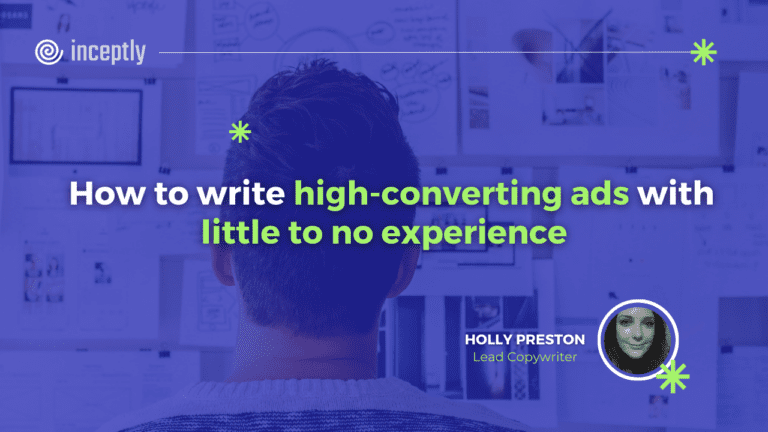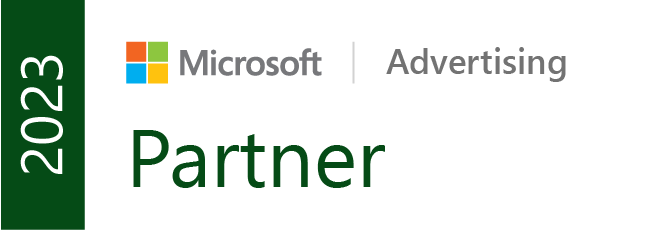
POV: You want to create ads that actually convert but have no idea where to start… Most guides assume you’re already a copywriting pro. Not this one. This is exactly what I would do if I were a new copywriter or brand owner with no experience creating ads. And the best thing? Anyone can do it, regardless of experience or skill.
Stick with me, and I’ll break down a simple strategy anyone can use to remove the guesswork and write killer ads that actually convert. No marketing degree needed, no years of trial and error – just a straightforward approach that works whether you’re a seasoned pro or complete beginner.
Want to brainstorm with our team on new ways to scale your business with YouTube Ads (and other performance video platforms)?
Join us for a free YouTube ad brainstorming session👇
Let’s get it.
Understanding your product and audience foundation 🧠
Successful ads start with crystal-clear product knowledge. Every team member should understand what your product is, how it works, its value proposition, and the mechanisms that make it effective. This clarity becomes the foundation of compelling messaging.
Interview current customers to capture how they describe your product’s benefits in their own words. These authentic descriptions contain powerful language that connects with prospects far better than corporate jargon ever could. Their natural vocabulary reveals the emotional benefits they’re actually buying.
✍️ Key takeaways:
Document your product’s core benefits and unique selling points through the eyes of customers.
Collect and analyze testimonials for patterns in language and emphasized benefits.
Use customer interviews to extract the exact phrases that indicate what truly matters to them.
Defining your target audience with precision 🎯
Your target audience determines everything from your messaging approach to your platform selection. Instead of guessing, build detailed customer personas that capture demographics, pain points, desires, and obstacles to purchase.
Study where your ideal customers congregate online and what content they consume. Dive into product reviews, Reddit threads, Facebook groups, and specialized forums to understand their language and concerns. For direct insights, run incentivized questionnaires offering discounts or free products to encourage honest feedback about their challenges and desires.
📋 Action steps:
Create detailed customer avatars for each segment, including their emotional states.
Map the online spaces where your audience gathers when seeking solutions.
Develop a “language bank” of the exact terminology they use to describe their problems.
Conducting deep research: Reviews, Reddit, and real conversations 🧐
The most powerful ad copy lives in the gap between how companies talk about products and how customers actually experience them. This research phase uncovers gold that your competitors likely miss.
Review both positive and negative product reviews across multiple platforms. The glowing ones reveal what customers value most, while the negative ones expose pain points and unmet expectations. Pay special attention to comparison reviews where customers explain why they chose one solution over another.
Reddit, specialized forums, and social media groups offer unfiltered conversations where people discuss their problems without marketing influence. These authentic discussions reveal the exact language that will make prospects feel understood in your ads.
🔥 THIS IS THE GAME CHANGER! 🔥
If you only remember one thing from this entire guide, make it this section.
This strategy alone will help you create winning ads even with zero experience.
Screenshot it, bookmark it, tattoo it on your arm if you have to—this is what separates ads that convert from ads that flop!
Trust me, this one insight will save you thousands in wasted ad spend.
Analyzing competitors to find winning formulas 🏆
Why reinvent the wheel when you can study what’s already working? Your competitors have already spent thousands testing different approaches, and their long-running ads reveal what actually converts.
Look for ads that have been running consistently for 3+ months—this is a clear sign they’re profitable. Use tools like VidTao to find and analyze these ads across platforms. Study their structure, hooks, storytelling approach, and calls to action.
Create a blueprint by breaking down these winning ads: How do they capture attention in the first 5 seconds? What emotional triggers do they use? How do they transition between key points? How do they handle objections? The patterns you identify become your proven template for success.
🎬 Watch me do it: Not sure exactly how to find and analyze winning ads? I’ve created a 5-minute Loom walkthrough showing my exact process for using Vidtao to identify high-performing ads and break down their structure. Watch the walkthrough HERE.
💡 Top tips:
Focus on ads that have been running for 3+ months (they’re definitely profitable).
Create a swipe file categorized by industry, platform, and ad type.
Don’t just copy—understand why their approach works for their audience. Context is key here.
Look for patterns in high-performing ads: How do they hook viewers in the first 5 seconds? How do they transition between points? What types of CTAs do they use? These patterns become your blueprint.
Psychological elements and storytelling for powerful ads ❤️
Despite what they claim, people rarely make purely logical purchasing decisions. Emotions drive actions, and logic simply justifies them afterward. Understanding the psychological triggers that influence buying behavior will dramatically improve your conversion rates.
Identify the primary emotion your product addresses—whether it’s fear, desire, frustration, or aspiration. Then, craft your messaging to connect with that emotional core. Effective emotional triggers include:
FOMO (“Limited time offer”)
Social proof (“Join 10,000+ happy customers”)
Aspiration (“Imagine waking up without back pain”)
Pain avoidance (“Never struggle with X again”)
Match your emotional appeal to your audience’s current state and desired transformation. If they’re frustrated with existing solutions, acknowledge that frustration before presenting your alternative. If they desire a specific outcome, paint a vivid picture of that desired state with your product as the bridge to get there.
The power of storytelling in direct response 📖
Stories are the most effective vehicle for delivering persuasive messages because they bypass our natural resistance to being sold. A well-crafted story captures attention, builds emotional connection, and makes your message memorable.
Structure your ad around a simple yet compelling story arc that viewers can immediately relate to:
Before: Show the relatable problem state that creates emotional resonance
Struggle: Highlight the frustration of previous solutions that didn’t work
Discovery: Introduce your product as the unexpected but logical breakthrough
After: Reveal the transformed reality that becomes possible with your solution
Creating and optimizing your ad 🚀
Different audiences require different messaging approaches based on their awareness level. Create distinct variations for problem-aware audiences (focus on validating and amplifying their problem), solution-aware audiences (position your solution as superior), and product-aware audiences (emphasize your specific benefits and offers).
AI tools have transformed the creative process for beginners. Combine all your research on your product, audience, and competitor insights, then use AI to generate initial scripts. Provide specific guidance like: “Create a 60-second Facebook video ad targeting mothers concerned about their children’s nutrition. Use the PAS framework and include a strong hook in the first 5 seconds.” The quality of AI output directly depends on the quality of your input and instructions.
Using proven frameworks and creating variations 🧪
Successful ads follow time-tested structures that guide viewers through a persuasive journey. These frameworks ensure that you include all the essential elements of a converting ad.
PAS: Problem-Agitation-Solution for pain-point focused audiences
AIDA: Attention-Interest-Desire-Action for new product introductions
BAB: Before-After-Bridge for transformation-focused offerings
Star-Story-Solution: Use a testimonial story to demonstrate results
Create strategic variations by changing just one key element at a time. Test different hooks, emotional angles, proof elements, or calls to action while keeping everything else consistent. This methodical approach reveals exactly what drives performance improvements.
Review, CTAs, and visuals 🔥
Your call to action determines whether interest converts to action. Create specific, action-oriented CTAs that reduce perceived risk and create urgency.
Test different approaches like:
“Start Your Risk-Free Trial Today” vs. “Get Instant Access Now”
“Claim Your 50% Discount” vs. “Save 50% When You Order Today”
“Join 10,000 Happy Customers” vs. “See Why 10,000 Customers Love Us”
“Yes! I Want Better Sleep” vs. “Get Better Sleep Tonight”
Steal my CTA Formula:
👉 If you want to [GET THE BENEFIT], then [CLICK THE LINK] to [THE BENEFIT OF USING THE PRODUCT]
Testing and analysis 📊
Testing isn’t optional—it’s the only way to transform guesswork into science. Start your testing journey by focusing on ONE key element that will have the greatest impact on performance, typically the hook (first 5-10 seconds) or the offer presentation.
Look beyond basic metrics to find actionable insights. For video ads, analyze where viewers drop off to identify weak points in your message. For social ads, review comments to uncover objections you haven’t addressed.
Essential tools for success: 🛠️
Competitor analysis: Vidtao, SpyFu, Facebook Ad Library, Magic Brief
Copy creation: ChatGPT, Claude, Hemingway Editor
Visual creation: Canva, DaVinci Resolve, Create Studio Pro
Testing: TubeBuddy, Facebook Ads Manager, Google Analytics
Platform-specific strategies 📱
Each platform has unique characteristics that affect how your ads should be structured. Customize your approach to match the viewer’s mindset and platform behavior.
Taking action when you have no experience 🏁
Creating high-converting direct response ads without experience isn’t about natural talent—it’s about following a strategic process. Research thoroughly, learn from what’s already working, leverage AI tools to accelerate your learning, and let testing data guide your improvements.
Remember that even experienced copywriters rarely nail it on the first try. The key is to start the testing cycle as quickly as possible, learn from the data, and continuously improve. With each iteration, your ads will get stronger, and your skills will grow.
The approach I’ve outlined is exactly what I’d do if I were starting from scratch today. By focusing on understanding your audience deeply and using the right tools to amplify your efforts, you can create ads that convert even without years of copywriting experience.
Want to brainstorm with our team on new ways to scale your business with YouTube Ads (and other performance video platforms)?
Join us for a free YouTube ad brainstorming session:
Want more content like this?
Don’t miss out on the latest news and updates from the world of Direct Response advertising! Subscribe to our newsletter today 👇

Holly Preston, Lead Copywriter
Holly is behind most of Inceptly's successful creatives, supporting the team with her experience and imagination, making her an invaluable asset to Inceptly.
Like this post? Let's continue the conversation!
Get in touch with us by shooting us a quick email or tagging us on LinkedIn or Instagram, and sharing your thoughts. Your feedback helps us keep our blog relevant and interesting.
Get Our Newsletter
Need Help?
Get in touch with us for an insightful evaluation of your ads + actionable tips to help amp up your direct response revenue




